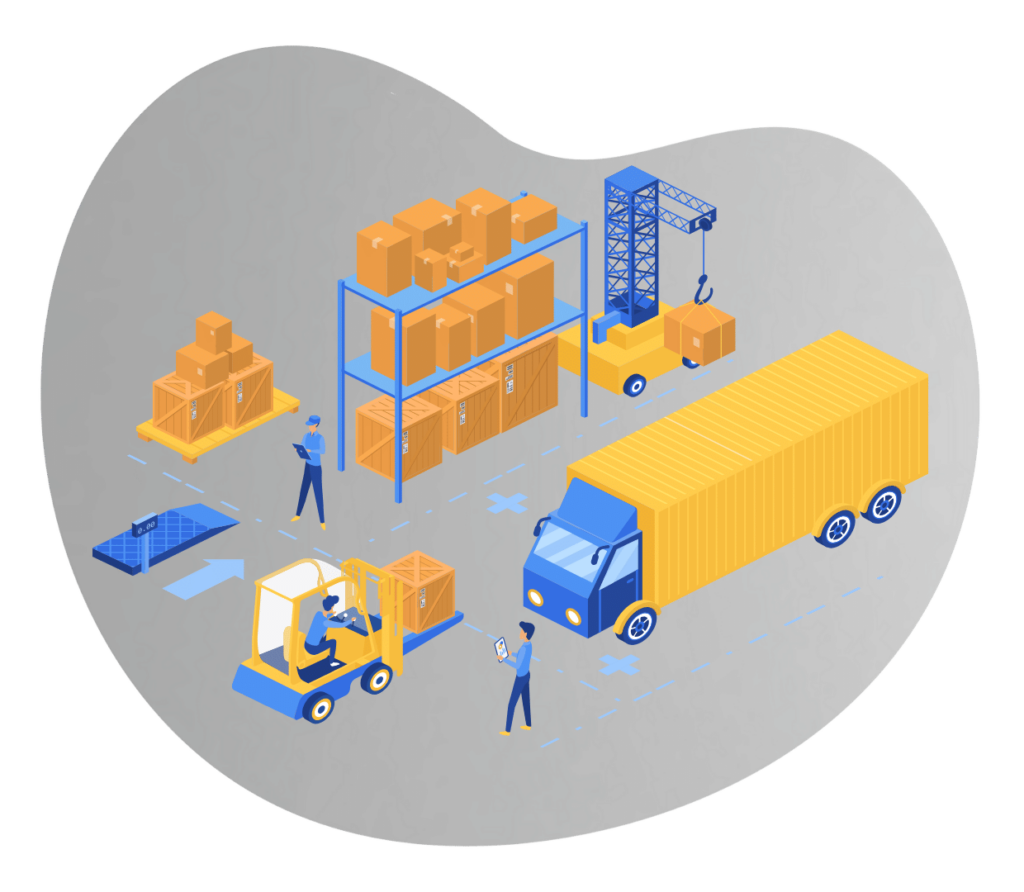Midstream Logistics – A Roadmap to Digital Transformation

Introduction
Midstream logistics is an essential component of the oil and gas industry’s machinery, operating as the foundation for transferring and storing valuable commodities between the upstream (exploration and production) and downstream (refining and distribution) sectors. Midstream logistics is the challenging process of transporting, storing, and processing crude oil, natural gas, and other petroleum products.
This blog provides a detailed explanation of midstream logistics and a comprehensive review of the oil and gas industry’s upstream, downstream, and midstream sectors.
Excited?
So why wait? Let’s dive in!
The oil and gas sector is a complex system. The system is divided into three sections:
- Upstream
Upstream is the extraction of oil and gas resources. This process entails drilling and obtaining petroleum (crude oil) from the earth. Upstream operations have a substantial impact on the accessibility of natural gas and oil resources in the world’s energy markets.
- Midstream
Midstream is the transportation and inventory management of oil and gas products. Midstream services include pipeline networks, transportation, and storage facilities. The midstream business facilitates efficient and effective commodity flow, minimizing possible delays.
- Downstream
Downstream refers to the final stage of transforming raw materials into usable end products. It includes the refining of crude oil and the processing of natural gas. This stage creates products such as fuel and diesel. Downstream activities are essential to fulfilling consumer demand and supplying raw materials to other sectors.
The Importance of Midstream Operations
Midstream activities play an important role in the energy supply chain, connecting production to downstream distribution. Meeting the increased demand for energy resources necessitates efficient oil and gas transportation, storage, and management practices. Smooth midstream logistics ensures a continuous flow of products, which has a huge impact on the energy environment.

- Storage
The storage of crude oil and gasoline balances the supply and demand for commodities across the country. Midstream operations involve the processing of supplies in large petroleum tankers as well as the preparation of distribution equipment.
- Transportation
When crude oil or natural gas is ready to be transported, the logistics step begins. The majority of the oil and gas is carried throughout the nation via unique pipelines. Oil is carried to its destination under extremely high pressure, making it highly secure and safe. Midstream pipelines are the most efficient and safe means to transport energy goods.
- Processing
Finally, materials must be transferred to their final destination: a warehouse, factory, or facility where finished goods are dispersed to end users. After processing, several means of transportation (trucks, barges, tankers, etc.) are used, and transportation is an essential step requiring the planning and implementation of aligned transportation techniques.
Midstream Logistics Challenges
Midstream logistics include various parties, ranging from producers to distributors. It can be difficult to coordinate these many organizations and ensure a seamless flow of products.
Regulatory Compliance: The energy business must follow strict safety and environmental standards. To prevent legal complications and retain public trust, midstream corporations must manage these compliance obligations.
Infrastructure Management: Managing infrastructure is crucial for running a budget-friendly midstream operation involving the supervision of pipelines, storage sites, and transportation resources.
Real-time Visibility: Having up-to-date insights into the supply chain is essential to avoid inefficiencies, delays, and higher operational costs.
Safety: Midstream hazardous material transportation and handling necessitates an emphasis on safety. Again, in order to meet industry norms and standards, your 3PL supplier must have a good safety program.
Infrastructure constraints: Establishing and maintaining massive midstream infrastructure requires significant investment and regulatory permits. Precise planning and coordination are required for building and improving existing facilities to meet rising demand and changing market conditions.
Regulatory Compliance: Midstream logistics rules prioritize safety, environmental preservation, and competitiveness, resulting in growing complexities that necessitate investments in monitoring systems, safety measures, and strict compliance.
Market volatility: Market variations, such as price movements and geopolitical crises, have the potential to disrupt oil and gas midstream logistics, demanding adaptive strategies. Having flexibility and backup plans is essential for lowering risks and preserving operational efficiency.
Why Digital Transformation is Essential for Midstream Logistics?
Midstream organizations are increasingly looking to digital solutions to simplify their operations, recognizing the limits of manual and old processes. These solutions make use of cutting-edge technology to optimize transportation routes, improve supply chain visibility, and boost overall operational efficiency.

~ Optimizing Transport Routes
The capacity of digital logistics systems to optimize transportation routes is one of their key benefits. Weather conditions, traffic patterns, and real-time data from sensors on transportation assets are all aspects that advanced algorithms consider. This optimization not only lowers transportation costs, but it also decreases environmental effects by reducing gasoline usage.
~ Enhanced supply chain visibility
The application of technology delivers insights across the whole supply chain. The combination of devices and sensors allows midstream operators to follow shipments in real time. This increased insight enables operators to make decisions by recognizing and fixing issues early on, reducing interruptions, and ensuring a dependable supply chain.
~ Data-Informed Decision-Making
The capacity to make informed decisions in a data-rich world is a game-changer. Big data analytics are used in digital logistics systems to deliver actionable insights. Predictive analytics can predict transportation asset maintenance needs, decreasing downtime and prolonging the life of important equipment. Furthermore, machine learning algorithms can optimize inventory management, ensuring that resources are efficiently deployed.
~ Blockchain Technology Integration
The midstream industry is exhibiting interest in technology because of its potential to improve transparency and security. By providing a visible transaction record, blockchain reduces fraud risks and ensures data integrity across the supply chain.
~ Operating Resilience
Technology improves supply chain visibility, allowing for real-time shipment tracking. This greater visibility allows for proactive issue resolution, decreasing disruptions, and guaranteeing a stable supply chain, all of which contribute to operational resilience.
~ Downtime Reduction
Reducing downtime not only improves operational efficiency but also reduces revenue loss, allowing midstream companies to plan maintenance schedules and optimize asset performance for long-term dependability and cost savings.
Last Thought
Incorporating technology like SAP S/4HANA Cloud into midstream logistics goes beyond technological advancement; it’s an essential strategy for firms looking to stay competitive and adaptive in a rapidly changing market. By planning logistics with solutions, midstream activities can improve efficiency, reduce cost, and provide flexibility in the face of changing market trends. Adopting these technologies is not an option; it is a path to ensuring the long-term profitability and viability of midstream businesses.
We KaarTech, have over 20 years of experience providing SAP services and solutions. With extensive experience in delivering SAP solutions across several industries has proven its ability to deliver 700+ SAP project implementations for 40+ satisfied customers in the oil and gas industry.
FAQ’s
What are the three sectors of the oil and gas industry?
The oil and gas industry is divided into three sectors: upstream, midstream, and downstream. Upstream involves extraction, midstream focuses on transportation and inventory management, and downstream involves refining and processing.
Why are midstream operations crucial in the energy supply chain?
Midstream operations bridge the gap between upstream production and downstream distribution, ensuring a consistent and dependable flow of oil and gas products. This is crucial for meeting the increasing global demand for energy resources.
What are the problems that midstream logistics faces?
Midstream logistics faces obstacles like regulatory compliance, infrastructure management, real-time visibility issues, and safety concerns while transporting and managing hazardous materials.
Why is digital transformation important in midstream operations?
Digital transformation is essential for midstream operations because it enables organizations to optimize transportation routes, boost supply chain visibility, make data-driven choices, and incorporate technologies such as blockchain for more transparency and security. It helps in the elimination of old manual operations while also increasing overall operational efficiency.
